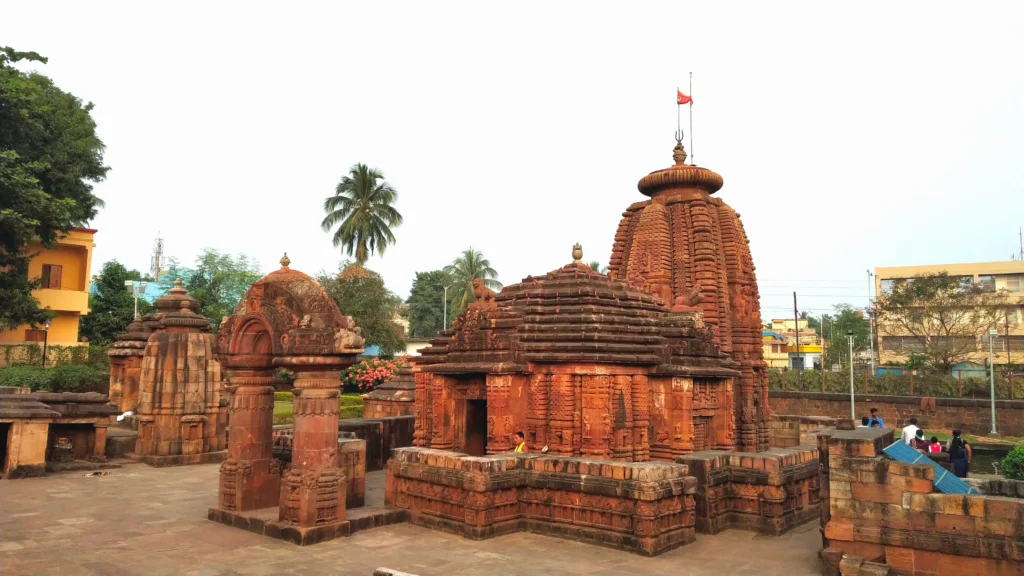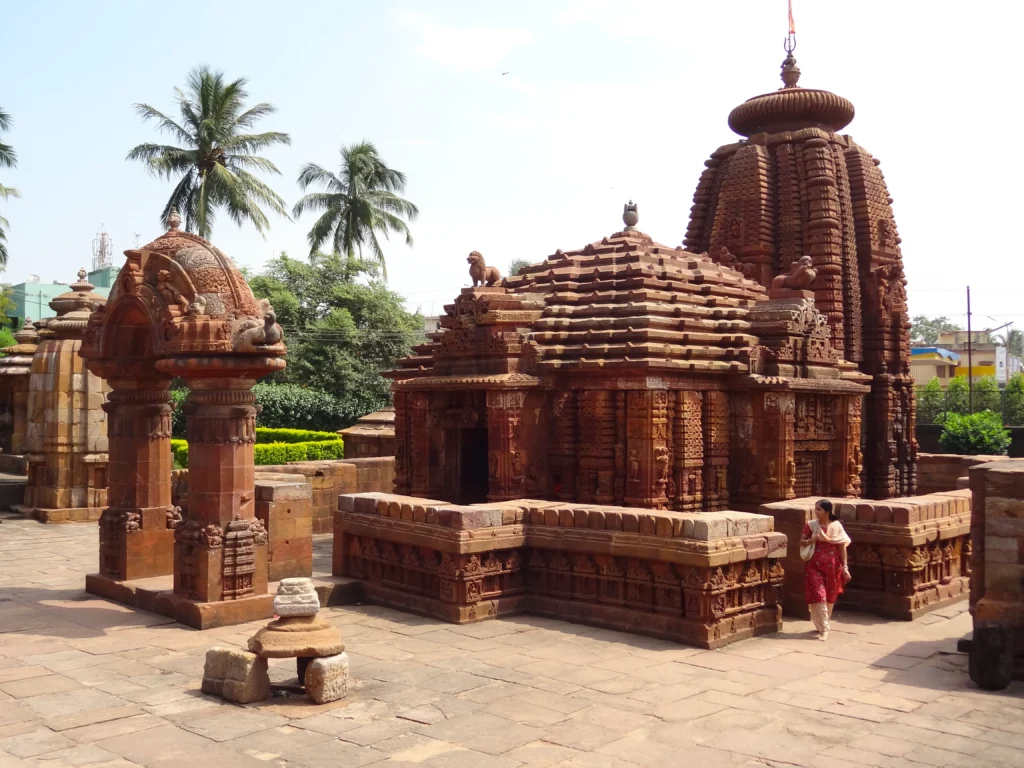The crisp mountain air stings your cheeks as you step into Mukteshwar, a Himalayan haven where myth and mist swirl in a breathtaking dance.
Having journeyed here to Orissa to soak in the atmosphere of this revered 10th-century temple and admire its exquisite stone carvings, I felt a peace descend even at first sight. While snow-capped peaks pierce the cerulean sky, daring you to touch the heavens.
My hiking boots crunched on gravel, anticipation buzzing in my veins. Was it the legend of Shiva meditating here, or the promise of panoramic vistas that had me breathless?
Come, let’s unpack the tapestry of Mukteshwar, one mystical thread at a time.
Historical Significance of Mukteshwar Temple
The temples in Bhubaneswar and Nainital are remarkable for their historical significance:
- Bhubaneswar Temples (10th Century):
- Era: These temples date back to the 10th century.
- Dynasties: Primarily built during the reign of the Somavamshi Dynasty.
- Significance: They showcase the Kalinga style of architecture, reflecting the dynasty’s devotion and artistic prowess.
- Nainital Temples (Approx. 350 Years Old):
- Age: These temples are around 350 years old.
- Rulers: Constructed under the patronage of local rulers, during a period of cultural and religious renaissance.
- Importance: They are a blend of local hill architecture and cultural beliefs, symbolizing the region’s spiritual heritage.
Both temple clusters offer a window into India’s rich past, displaying unique architectural styles and cultural evolution under different dynasties.

Tourism and Accessibility
Tourism and Accessibility to Mukteshwar Temples
- Reaching the Temples:
- Bhubaneswar Temple: Nearest airport – Biju Patnaik International Airport, about 4.5 km away. The closest railway station – Bhubaneswar Railway Station, approximately 4.4 km.
- Nainital Temple: Pantnagar Airport is the nearest, around 98 km away. Kathgodam Railway Station, 64 km away, is the closest train link.
- Best Time to Visit:
- Bhubaneswar: Pleasant throughout the year; winters (October to February) are ideal.
- Nainital: Summer (March to June) for clear Himalayan views.
- Things to Do Nearby:
- Bhubaneswar: Explore ancient temples, local markets, and gardens.
- Nainital: Enjoy trekking, nature walks, and panoramic mountain views.
Visit these temples for a blend of spiritual peace and natural beauty.
Mountain Majesty: Architectural Delights
Mukteshwar’s temples aren’t just places of worship – they’re architectural tapestries woven with stories waiting to be unraveled.
Bhubaneswar’s Kalinga Canvas:
Step into the Bhubaneswar Mukteshwar and prepare to be dazzled. The Kalinga style takes center stage, its sandstone walls adorned with celestial dancers, fierce deities, and intricate geometric patterns.
Imagine towering gateways, intricately carved pillars, and a roof resembling a celestial chariot, every detail whispering tales of celestial realms and divine grace.
Nainital’s Mountain Masterpiece:
Look up! The Nainital Mukteshwar, perched amidst pines, boasts unique features. Its pagoda-style roof, inspired by Buddhist monasteries, blends seamlessly with the Himalayan grandeur.
Where Myths and Mountains Mingle
But Mukteshwar’s magic extends beyond bricks and mortar. Legends dance in the air, whispering tales of:
- Lord Shiva’s Meditation: Did Lord Shiva himself meditate here, seeking cosmic balance? Some say yes, and the serenity of the place lends credence to the myth.
- Demon-Slaying Saga: Another legend speaks of the fierce warrior Mansingh, who slays the demon Jalasur here. Look for the “Trishul,” Shiva’s trident, said to mark the battleground.
A Himalayan Haven in Hindu Lore: Mukteshwar’s name itself holds significance. “Mukti” means liberation, and devotees believe worshipping here grants spiritual freedom.
Let your imagination soar, and discover the magic that makes Mukteshwar more than just a destination, it’s an experience etched in legend and stone.
Spiritual, Natural & Cultural Significant
The temples in Bhubaneswar and Nainital are not just architectural marvels but also hold deep spiritual and cultural significance:
Spiritual Significance:
- Centers of Worship: These temples serve as pivotal centers for worship and spiritual activities, attracting devotees year-round.
- Mukteshwar and Shiva Worship: Particularly, Mukteshwar Temple in Nainital is renowned for its dedication to Lord Shiva, symbolizing liberation and enlightenment.
Natural Splendor and Views:
- Himalayan Views in Nainital: The temples in Nainital offer mesmerizing views of the Himalayas, blending spirituality with natural beauty.
- Serene Surroundings in Bhubaneswar: The temples here are in peaceful gardens, making it a calm retreat for visitors.
Cultural Impact and Festivals:
- Festivals and Events: These temples host various festivals and cultural events, showcasing India’s rich traditions.
- In Bhubaneswar, festivals like Shivaratri and Ashokashtami draw large crowds.
- In Nainital, the Mukteshwar Temple becomes a hub of activity during Shivratri.
- Promoting Culture: These temples play a crucial role in preserving and promoting Indian culture and heritage, acting as living museums of history and tradition.
Together, these aspects make the temples in Bhubaneswar and Nainital not just places of worship but also custodians of India’s rich cultural tapestry.
FAQs
Is Mukteshwar Temple a Jyotirlinga?
Mukteshwar Temple is not a Jyotirlinga. Jyotirlingas are the 12 special shrines dedicated to Lord Shiva where he is worshipped as a fiery column of light.
Which God is Mukteshwar?
Mukteshwar reverently dedicates itself to Lord Shiva. The deity is revered here in the form of a lingam, symbolizing the divine energy and potential of Lord Shiva.
What is Mukteshwar Known As?
Mukteshwar charms with its scenic beauty and the allure of the ancient Mukteshwar Temple. It’s often referred to as a serene and spiritual retreat, offering breathtaking Himalayan views.
Which River Flows in Mukteshwar?
There is no major river flowing directly through Mukteshwar but River Ravi flows in the town. This hill station is mostly famous for its mountainous terrain rather than its riverine landscapes.
How Many Steps Are There in Mukteshwar Mahadev Temple?
The exact number of steps at Mukteshwar Mahadev Temple is 100 steps.
Where is Mukteshwar Temple?
Mukteshwar Temple is located in Bhubaneswar, Odisha, India.

